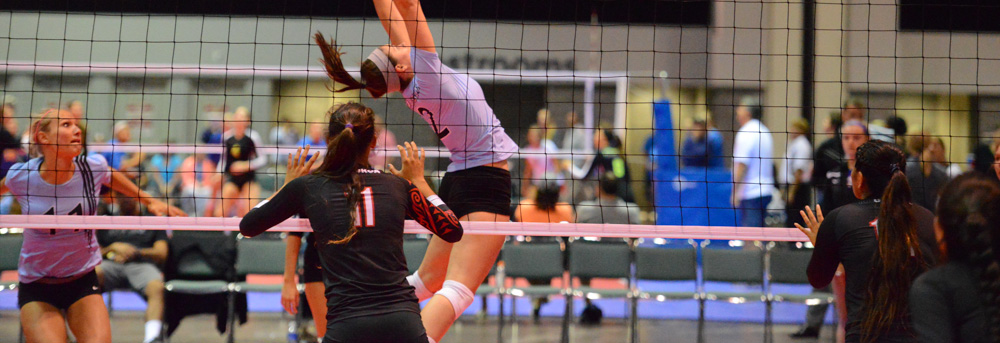Every Athlete a Coach
How can we teach twenty middle schoolers safe positioning and movement?
Can basic movement and mobility training be scaled to larger groups of young athletes?
Given the opportunity to help coach my daughter’s middle school volleyball team, I set about trying to answer the above question. It’s one thing to give an athlete one-on-one or one-on-two coaching in the weight room. But with twenty-one middle school volleyball players, is it possible to translate an awareness of basic movement patterns into a larger group setting?
With two coaches available for twenty-one athletes, the ability for coaches to provide individual feedback is limited. So here’s the experiment: what if we could turn every athlete into a coach, thus preserving a one-to-one coach-athlete experience?
We begin each volleyball practice with a 30-minute mobility and strength training session. Instead of asking all the athletes to follow along with prescribed exercises, we started by dividing them into pairs – so at any one time, one athlete is performing the exercise, and the other athlete is the “coach” to observe, correct, and encourage her partner. While each athlete is only “working” half the time, this strategy provides sufficient time for recovery between sets while keeping the “coach” actively engaged in helping her teammate.
Starting at the Beginning
We initially focused on two movements: the plank and air squat.
After briefly introducing how to establish and maintain a stable spine (“squeeze glutes/engage abs” and using a broomstick to test as shown here), we devoted 15 minutes to the plank.
The head coach and I then “coached the coach” in identifying and correcting form deficiencies in the athlete, and tried to minimize our direct coaching of the athlete. Each athlete spent about 4 minutes holding a plank, taking breaks when necessary.
The coaches were instructed to identify three elements:
1) Maintaining neutral spine
2) “Spreading the floor” with the hands/external rotation torque in the shoulders such that armpits are pointing forwards.
3) Arms vertical and perpendicular to floor
The next 15 minutes were devoted to the air squat. In this case, since the motor sequence is more detailed, I called out the cues and and had everyone repeat them while the coaches looked for faults.
Setup details:
Stance width was established by having the athlete jump and land in place – this generally produced a good width that was a bit more than shoulder width apart; not as wide as a powerlifting stance but effective for training the jump/land motor pattern.
Arms were held out in front of the body, with palms up. Palms up establishes a stable shoulder with external rotation and upper back/lat engagement, both of which build muscle memory for a solid defensive platform.
Cues were used as follows:
-
Squeeze glutes
-
Engage abs
-
Spread the floor
-
Sit back
-
Knees out
Coaches focused on different things on different days. On the first day I had the coaches “block the knee” by placing their hand just in front of their athlete’s toe at knee height to emphasize the need to “sit back” into the squat and not drive knees forward. On the second day I added a focus on the “knees out” cue to ensure knees were not collapsing inwards. We then added a focus on maintaining neutral spine all the way to parallel, and watching the ankles while we “spread the floor” to maintain foot arch and prevent navicular drop. Broomsticks continued to be helpful for illustrating neutral spine, and identifying the point at which the athlete slips into lumbar flexion.
They would hold each rep for a few seconds at parallel (or try to) while the head coach and I would check form with the coaches.
We then finished with some instruction on good stretches/mobilizations to use as homework – initially focused on stretching in the bottom position with feet both apart and together, as well as the couch stretch.
One Week Later
As expected, the team initially ran the gamut from pretty good to horrendous in terms of motor control and mobility. Over the first week, however, they made impressive progress. With only a few exceptions, each of these sixth through eighth graders holds an excellent plank, and would now be fine to begin training a gently-weighted back squat.
Now that they are all exhibiting clean form, we’ve advanced things a bit. Instead of two four minute blocks of plank time to maximize teaching interactions, we have eight one-minute sets where the coaches/athletes alternate roles, and try to maintain their plank with solid form for as much of each minute as possible.
We’re now doing squats in a big circle with each player taking turns calling out the motor cues: squeeze glutes/engage abs/spread the floor/sit back/knees out/back up. So not only does each athlete get to prove that she knows the cues, the entire group repeats after her for further reinforcement. One trip around the circle gives us plenty of reps, with everyone having a leadership role.
We’ve also introduced new exercises: moving towards mastery of the bottom position with the pistol, and advancing from the plank to a modified burpee (minus the pushup at the moment). Thanks to Carol Paoli’s Free+Style book for fantastic motor progressions for these crucial body weight exercises! In all cases, we emphasize quality of work over quantity, although we have no trouble breaking a sweat.
